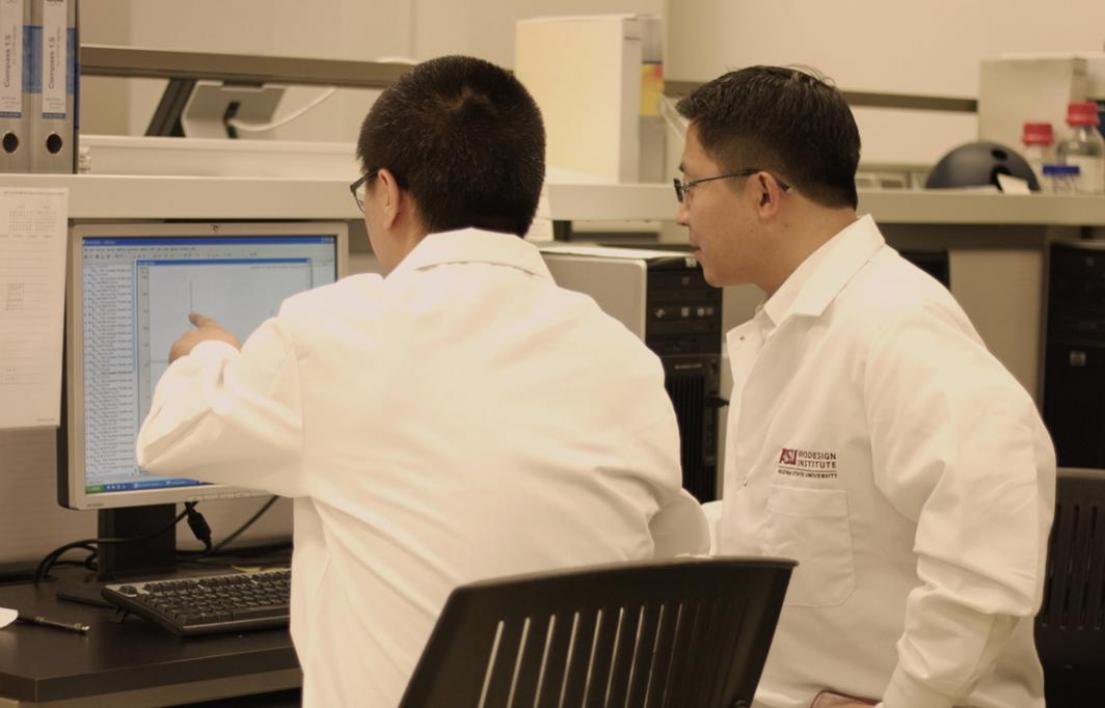To catch a serial killer, homicide detectives must quickly and accurately find clues. Trace evidence left at a crime scene may eventually reveal the killer’s presence and identity, but the detectives first have to know what to look for.
Like a criminal hiding in plain sight, contagious pathogens spread by capitalizing on the delay between initial infection and telltale symptoms in their hosts. That reality was painfully clear during the 2014 Ebola outbreak when clinics struggled to prevent transmission from patients to caregivers overwhelmed by the disease. The deadly virus traveled across continents before its symptoms were detected and the infected patients were quarantined.
The 2014 epidemic subsided, but recent cases in the Congo indicate the virus is still an active threat. In preparation for future outbreaks, researchers are racing to equip field clinicians with diagnostic tools that will detect virus-infected individuals early to prevent new epidemics.
One of those tools is a nanotechnology platform developed by Arizona State University engineer Tony Hu that detects disease molecules in blood samples. In this assay, diluted patient blood samples are mixed with porous silicon nanodisks (pSiNDs). A machine called a mass spectrometer (MS) measures the mass of all the molecules bound by these pSiNDs. The method, known as pSiND-MS, is very sensitive and can identify specific amino acid sequences of peptides belonging to viruses like Ebola.
“Ebola is a disease, but it is also a family. For each strain, the treatment can be different. We want to develop a method that only uses one step, one method [to identify these strains],” said Hu (pictured above).
Hu, a researcher at the Virginia Piper Center for Personal Diagnostics at ASU’s Biodesign Institute and associate professor at the Ira A. Fulton Schools of Engineering, previously applied the pSiND-MS method to Tuberculosis testing and succeeded in reducing the diagnosis time from days to mere hours. He plans to apply a similar approach to Ebola by using the pSiND-MS method to improve detection of three telltale biomarkers in Ebola patient blood samples.
These three biomarkers are peptide sequences. The virus produces one of these peptides, Ebola antigen VP40, soon after infection. The other two peptides, Serum Amyloid A and alpha-1-antichymotrypsin, are produced by the patient’s immune system in response to the infection.
“Once you enrich the antigen directly from the blood, then we have some special way to digest this antigen and profile their fragment picture landscape on the mass spec,” Hu said.
All three peptides are detectable in blood samples even before viral particles themselves are detectable. They are a trio of clues that reveal in just two hours whether a person has contracted Ebola.
Thanks to a new grant from the National Institutes of Health, Hu’s lab will partner with the U.S. Army Medical Research Institute of Infectious Diseases (USAMRIID) to improve and expand the rapid Ebola test even further. Hu’s lab is located at ASU’s Biodesign Institute, but USAMRIID’s Biosafety Level-4 facility in Fort Detrick, Maryland, will conduct all the Ebola experiments.
The two primary goals of partnering with USAMRIID are to refine the pSiND-MS method for detecting and counting the three Ebola biomarkers. The researchers also want to determine how different patterns of these biomarkers correlate with different strains of Ebola.
Hu aims to make the new test as simple and accessible as possible, which is why it relies on mass spectrometers commonly found in most hospitals and laboratories.
Sharing diagnostic data quickly between rural clinics, hospitals and laboratories significantly improves management of contagious epidemics. Equipping caregivers with simple, sensitive and rapid tools is a pivotal weapon in the struggle to detect and contain viral outbreaks before they claim more victims.
Top photo: ASU bioengineer Tony Hu discusses his partnership with the U.S. Army to develop faster diagnostic tests for Ebola. Photo by Jason Drees/Biodesign Institute
More Science and technology

ASU technical innovation enables more reliable and less expensive electricity
Growing demand for electricity is pushing the energy sector to innovate faster and deploy more resources to keep the lights on and costs low. Clean energy is being pursued with greater fervor,…

What do a spacecraft, a skeleton and an asteroid have in common? This ASU professor
NASA’s Lucy spacecraft will probe an asteroid as it flys by it on Sunday — one with a connection to the mission name.The asteroid is named Donaldjohanson, after Donald Johanson, who founded Arizona…

Hack like you 'meme' it
What do pepperoni pizza, cat memes and an online dojo have in common?It turns out, these are all essential elements of a great cybersecurity hacking competition.And experts at Arizona State…





